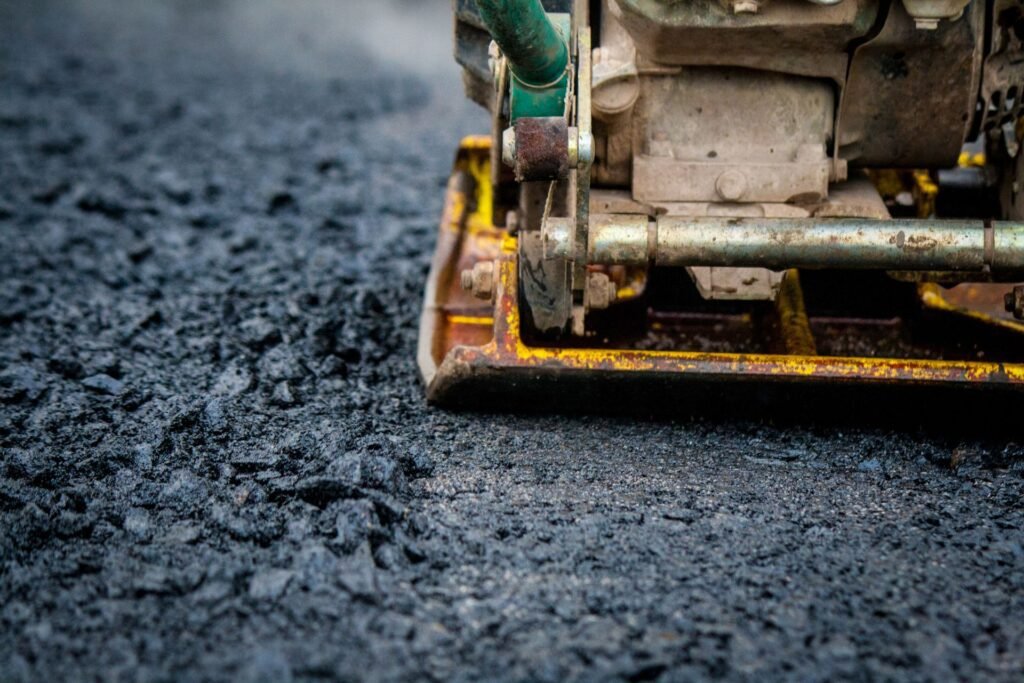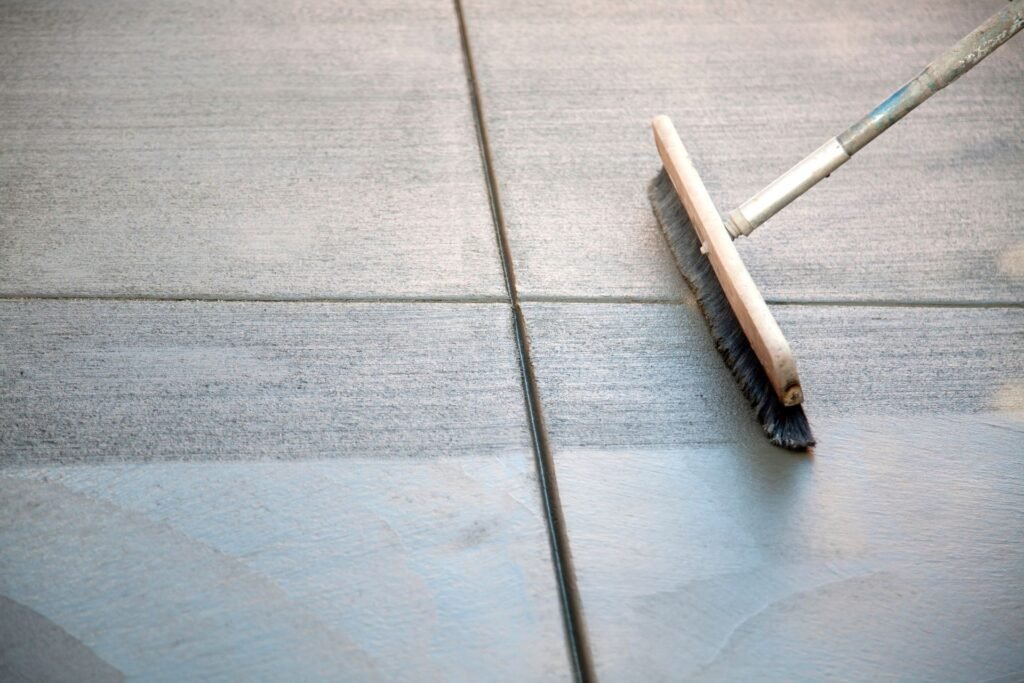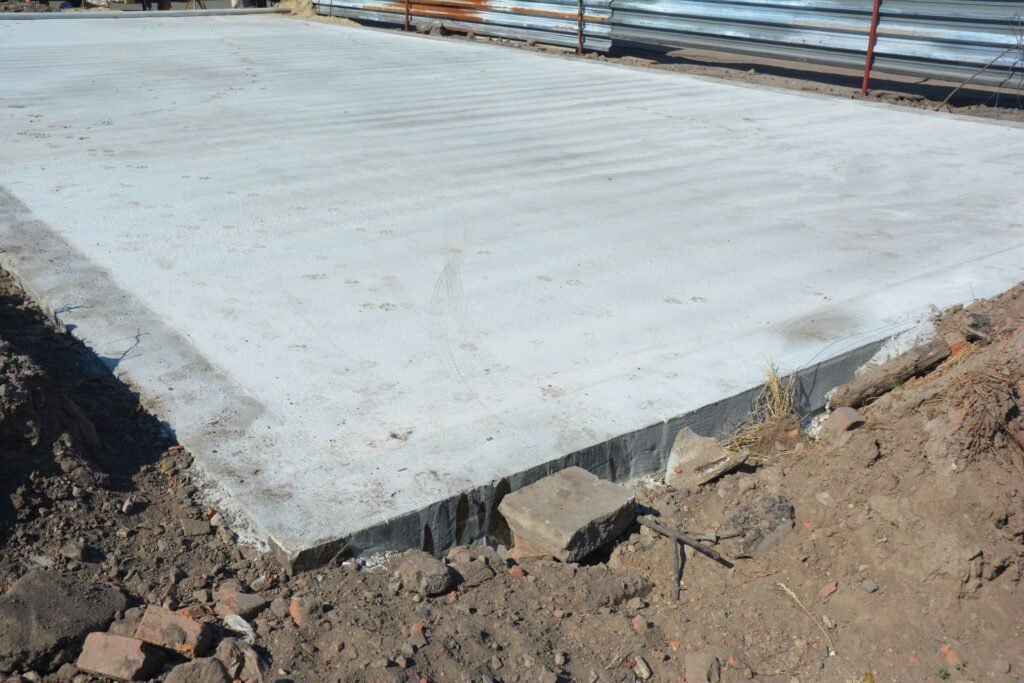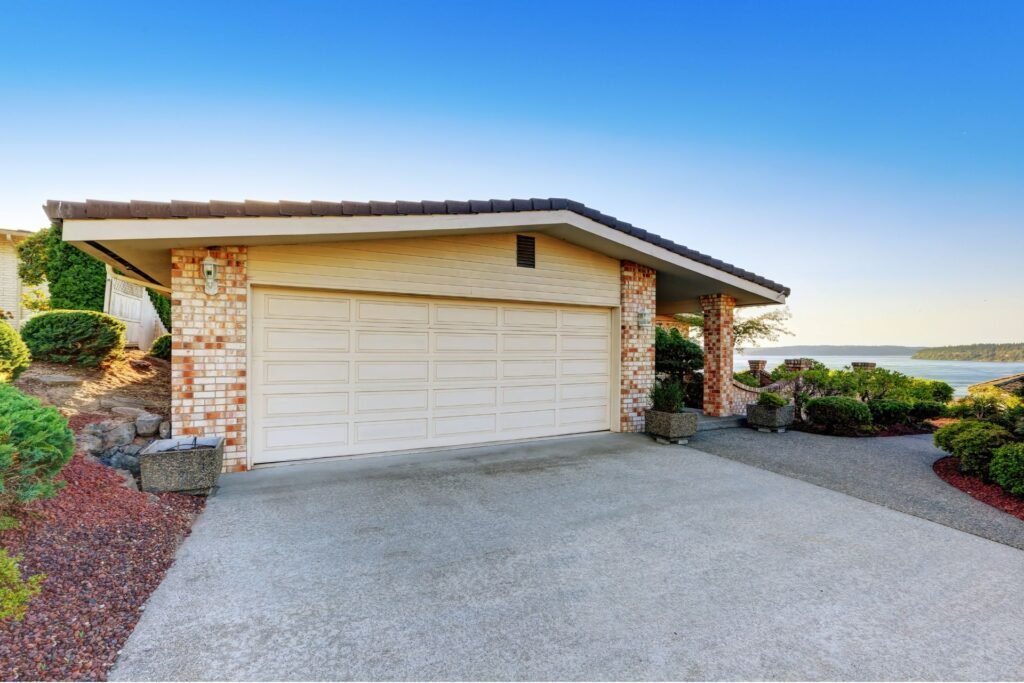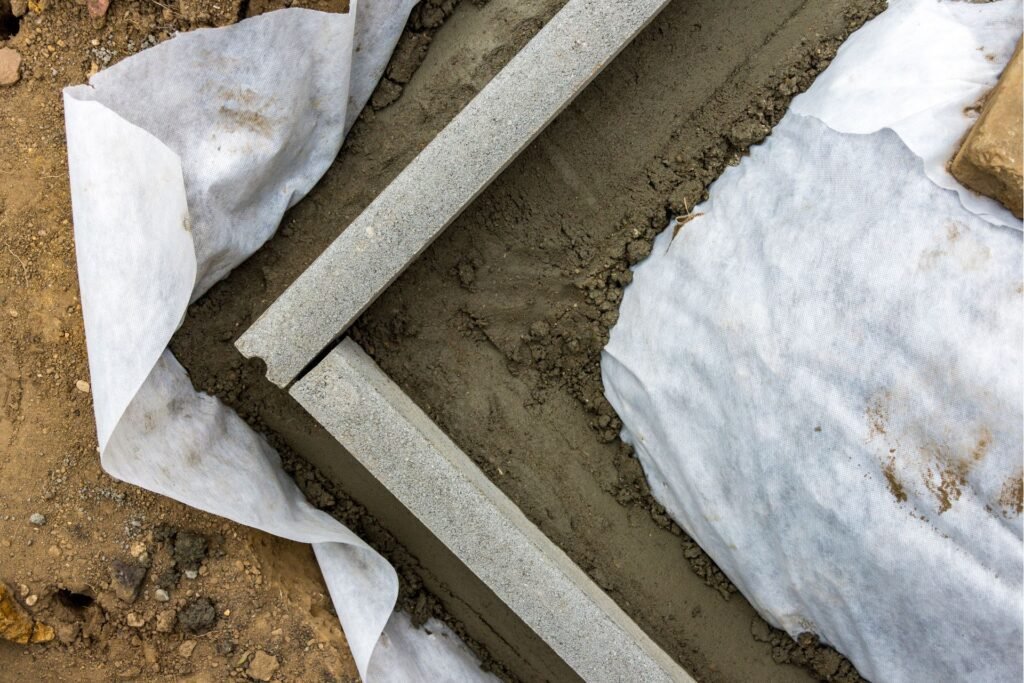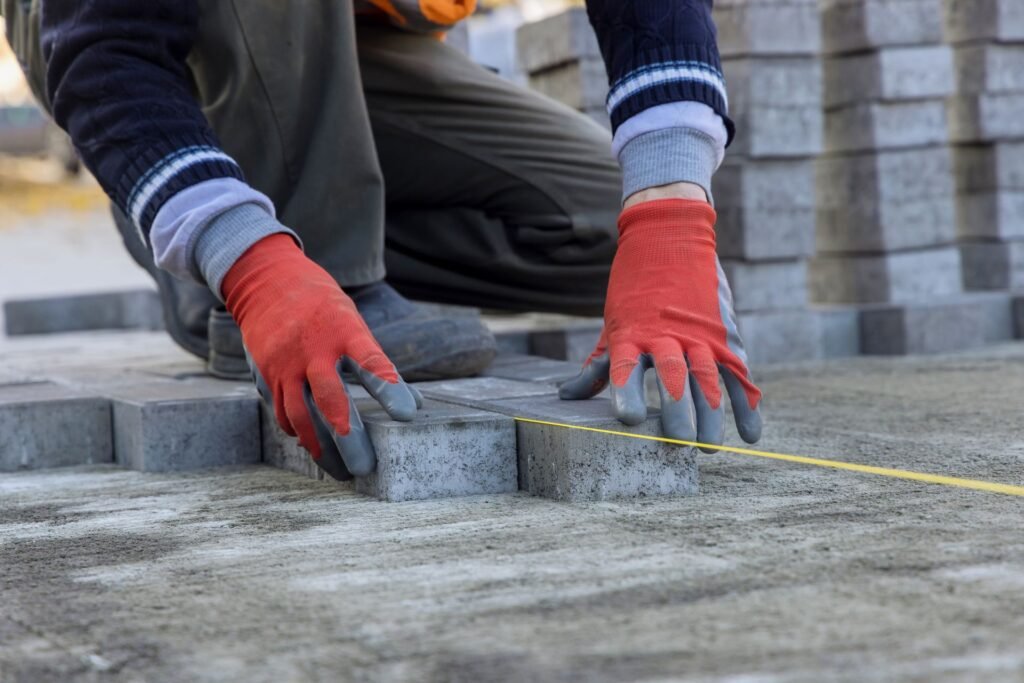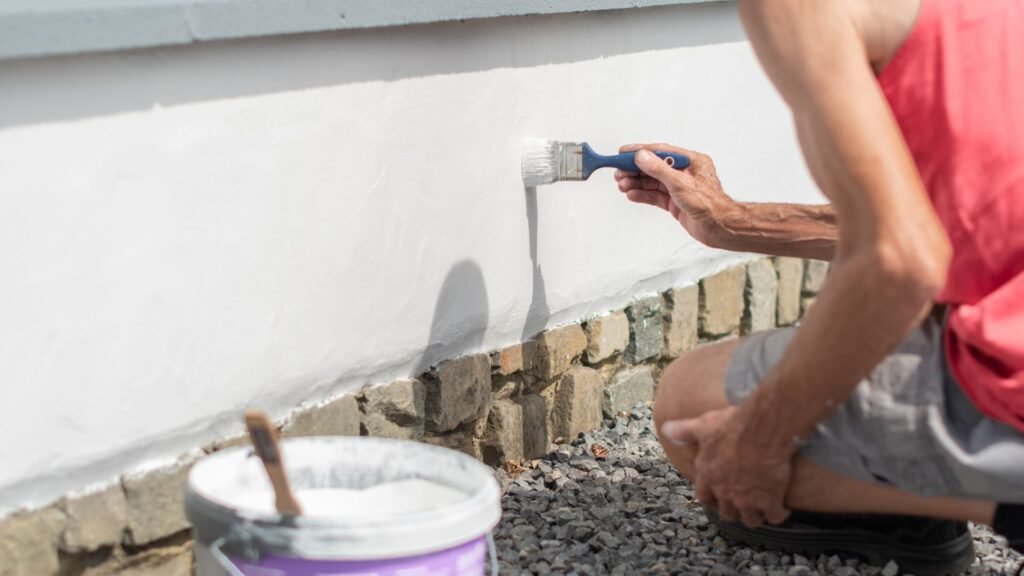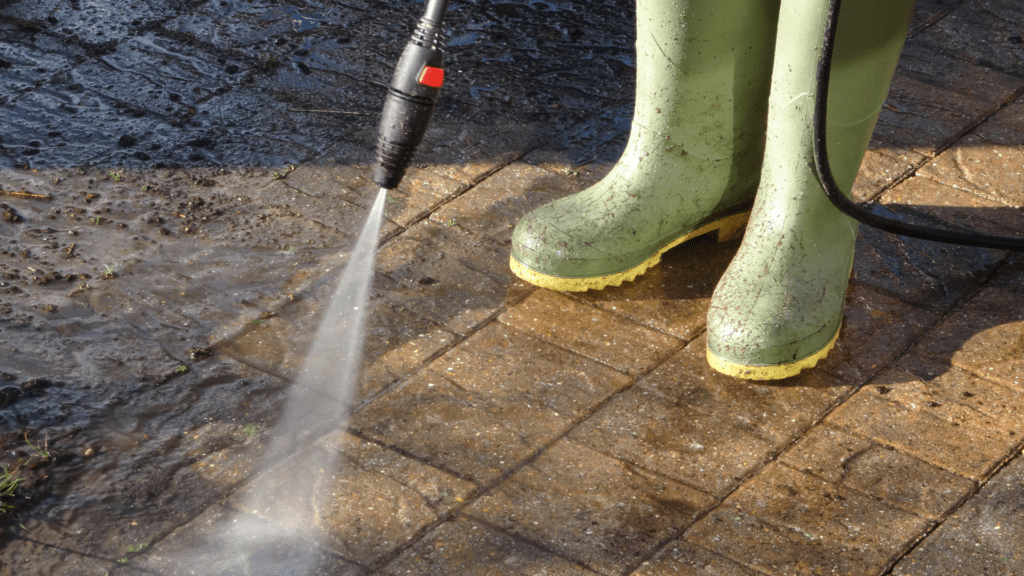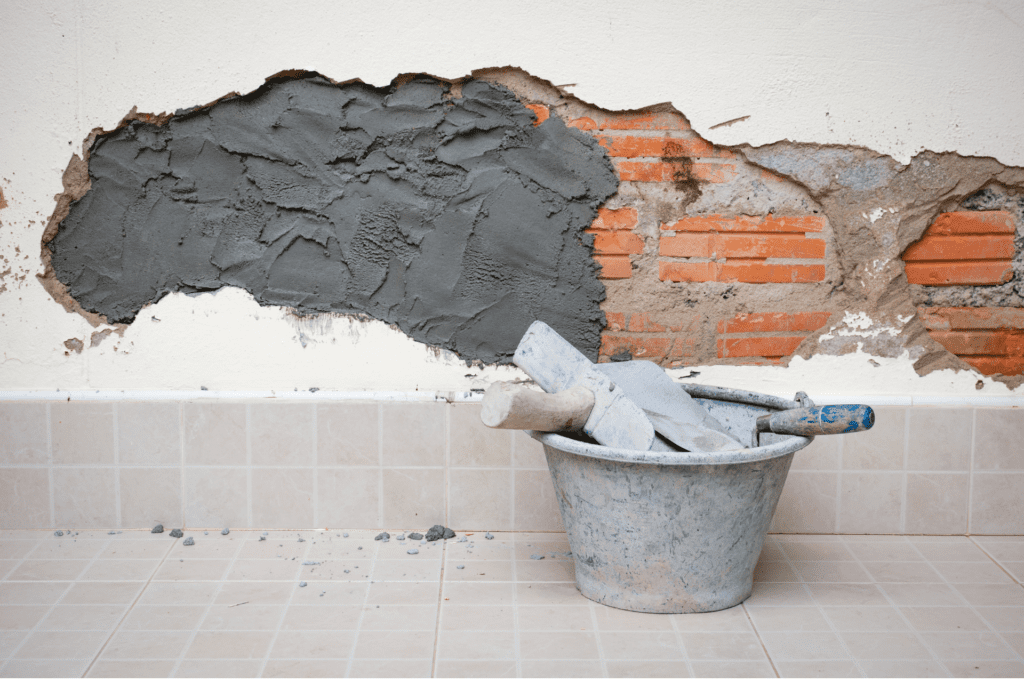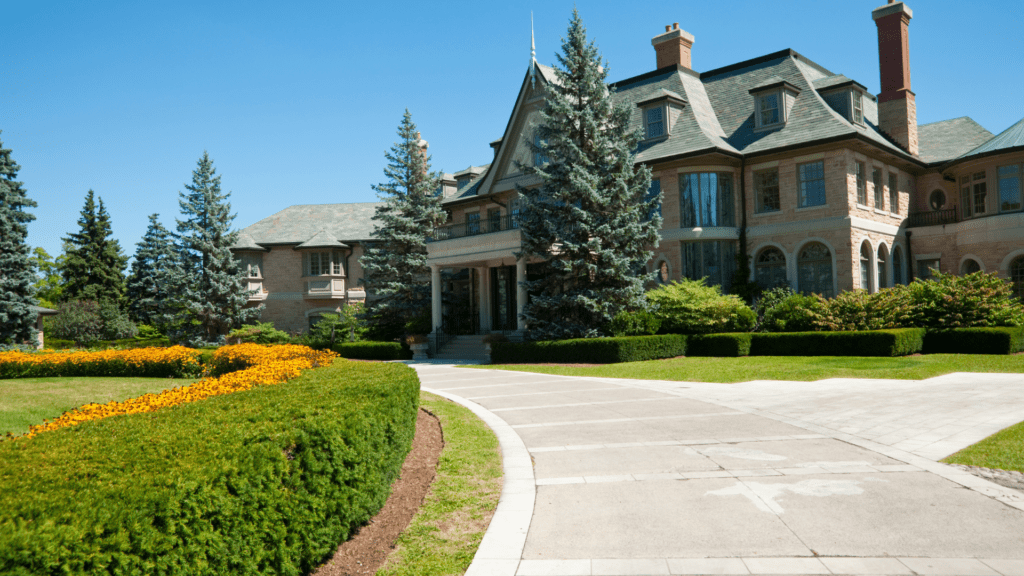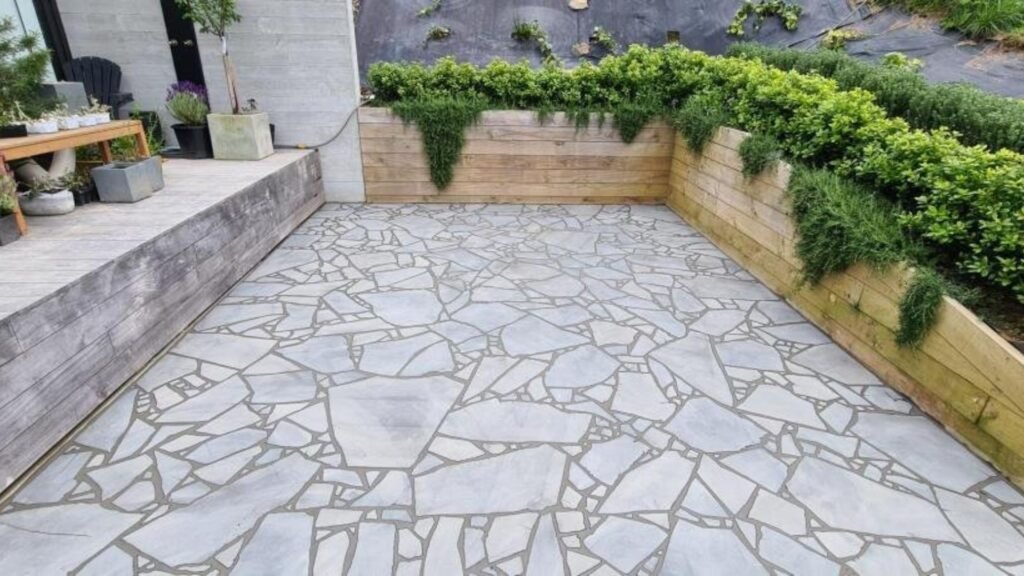Welcome to your ultimate guide on gravel driveway maintenance! If you have a gravel driveway, you already know that it adds rustic charm and practicality to your property, but it also requires regular upkeep to keep it in good shape. In this post, we’ll walk you through the essential steps to maintaining your gravel driveway, from preventing potholes and erosion to controlling weeds and leveling out ruts. Whether you’re a seasoned DIYer or new to driveway care, these simple yet effective tips will help you preserve your driveway’s durability and aesthetics, saving you time and money in the long run.
Gravel driveway maintenance involves regular tasks such as filling potholes, leveling the surface, preventing erosion, and controlling weeds. To maintain a gravel driveway, rake and compact the gravel to keep it even, address drainage issues to avoid washouts, and periodically add fresh gravel to keep the surface smooth. Regular upkeep ensures your driveway remains durable, functional, and visually appealing.
Table of Contents
Why Maintaining A Gravel Driveway Is Important
Maintaining a gravel driveway is essential for several reasons, from ensuring its long-term durability to enhancing the overall look of your property. Let’s break down the key benefits of regular upkeep, including longevity, aesthetics, functionality, and cost savings.
Increase the Lifespan of Your Gravel Driveway
One of the main reasons to keep up with gravel driveway maintenance is to extend its lifespan. Gravel driveways are known for their durability, but neglecting routine care can lead to premature wear and tear. Over time, weather conditions, heavy vehicle use, and natural settling can cause the gravel to shift or become compacted, leading to ruts, dips, and drainage issues.
Regular maintenance, such as grading and adding fresh gravel when needed, helps prevent these problems. By addressing minor issues early, you can avoid them developing into larger, more costly repairs down the road. Essentially, taking care of your gravel driveway ensures that it will continue to serve you well for years to come.
Aesthetics
A well-maintained gravel driveway can significantly improve the appearance of your property. A clean, even, and properly edged gravel surface gives your home or business a polished and welcoming look. On the flip side, an unkempt driveway with overgrown weeds, scattered gravel, or potholes can detract from the beauty of your surroundings and give off a neglected vibe.
Regular maintenance, including keeping the gravel evenly distributed and managing the borders, will not only maintain the functionality but also enhance the visual appeal of your property. Whether you’re looking to increase curb appeal or maintain the charm of a rural setting, a well-groomed driveway can make a big difference in how your property is perceived.
Functionality
Gravel driveways can become uneven or develop potholes over time, especially with frequent vehicle traffic. These imperfections can create a rough and uncomfortable driving experience, not to mention potential damage to your car’s suspension or tires. More seriously, an uneven surface can pose safety risks, particularly for pedestrians or during adverse weather conditions.
Regular maintenance, such as grading the surface and filling in low spots, ensures that your gravel driveway remains smooth and easy to drive on. This prevents larger issues like deep ruts or drainage problems that could arise from uneven wear. By keeping the surface level and free of hazards, you’re not only protecting your vehicles but also ensuring a safer environment for anyone using the driveway.
Cost Savings
Routine care for your gravel driveway can save you significant money in the long run. Small maintenance tasks like replenishing gravel, filling potholes, and grading are relatively inexpensive compared to more extensive repairs. When neglected, minor issues can escalate, potentially requiring a full re-grading of the driveway or even a complete replacement.
By staying on top of maintenance, you avoid letting the driveway reach a point where major repairs are necessary. This proactive approach not only saves you from the high cost of significant fixes but also spares you the inconvenience of dealing with a deteriorating driveway. In short, regular upkeep is a cost-effective way to keep your gravel driveway in top condition.
Maintaining a gravel driveway isn’t just about keeping it looking good, it’s about preserving its functionality and saving you money over time. By investing in regular upkeep, you can enjoy a long-lasting, attractive, and smooth driveway without the need for expensive repairs or a complete overhaul. Whether you’re focused on aesthetics, longevity, or cost savings, regular maintenance is key to getting the most out of your gravel driveway.
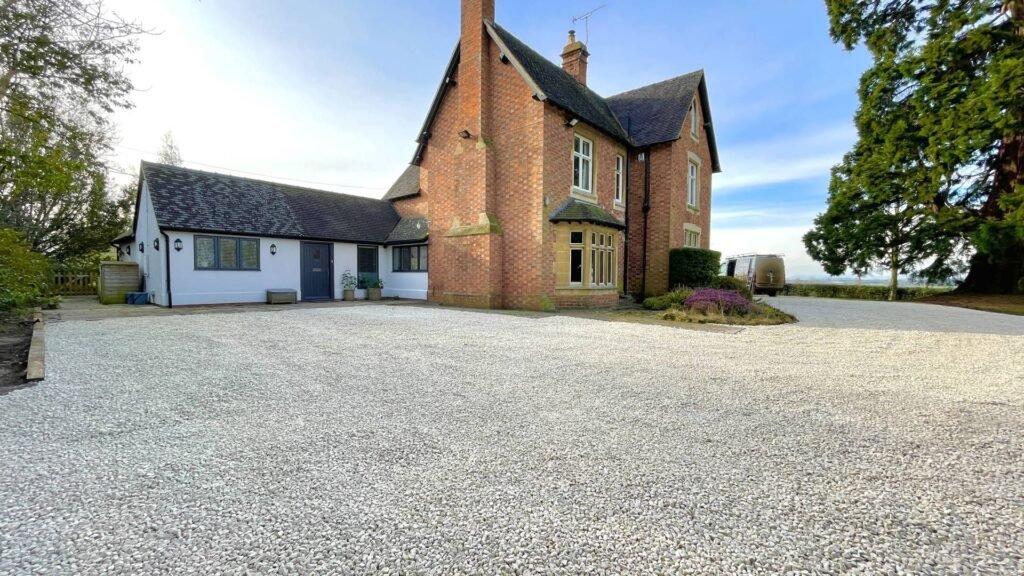
Common Gravel Driveway Issues
Gravel driveways are a popular choice for homeowners due to their affordability and rustic appeal. However, like any driveway material, gravel comes with its own set of challenges. Whether it’s wear and tear from daily use or environmental factors like rain and wind, several common issues can arise. Understanding these problems and knowing how to address them can help maintain the longevity and appearance of your gravel driveway. Here’s a breakdown of the most frequent gravel driveway issues:
Potholes
One of the most common issues in gravel driveways is the formation of potholes. These occur when water seeps into the driveway and loosens the gravel, creating soft spots. Over time, as vehicles pass over these weakened areas, the gravel is displaced, forming a depression in the surface. Potholes are more likely to develop after heavy rain or in areas where the drainage isn’t properly managed. If left untreated, potholes can expand, making driving on the driveway uncomfortable and potentially damaging vehicles. Regular maintenance, such as filling in the depressions and compacting the gravel, can help prevent these pesky potholes from worsening.
Erosion and Washouts
Another frequent issue with gravel driveways is erosion and washouts, especially in areas with heavy rainfall or improper drainage. Rainwater can flow over the surface, gradually carrying away the gravel and soil beneath it. In sloped driveways, this problem can be even more pronounced as gravity accelerates the movement of water. Over time, the erosion can create deep channels or wash away sections of the driveway, leaving it uneven and difficult to navigate. Wind can also contribute to erosion by blowing away the finer particles of gravel, which can reduce the integrity of the driveway’s surface. To combat erosion, it’s essential to ensure that your driveway has proper drainage, such as installing ditches or culverts to direct water flow away from the gravel.
Ruts and Channels
Gravel driveways that see frequent use are prone to developing ruts and channels. These are grooves or depressions in the surface caused by the weight of vehicles repeatedly driving over the same spots. Over time, the gravel is displaced, creating uneven areas that can be difficult to drive on and may cause further erosion if water collects in these ruts. High-traffic areas are particularly vulnerable, and if left unaddressed, the problem can worsen, requiring more significant repairs. To prevent ruts from forming, it’s helpful to regularly grade the driveway, redistributing the gravel and ensuring that the surface remains level.
Weed Growth
While gravel driveways may seem low-maintenance, they’re not immune to weed growth. Weeds can sprout between the gravel stones, especially if there’s dirt or organic matter present. Once weeds take root, they can be difficult to remove and can detract from the clean appearance of your driveway. Weeds can also destabilize the gravel by loosening the compacted surface, leading to other issues like ruts or potholes. To prevent weeds from taking over your driveway, it’s a good idea to regularly treat the area with a weed killer or consider laying down a weed barrier fabric before installing the gravel. Maintaining a gravel driveway can be straightforward if you’re aware of these common issues and take proactive steps to address them. Regular maintenance like filling potholes, managing water runoff, grading the surface, and controlling weeds can help extend the life of your gravel driveway, ensuring it remains functional and attractive for years to come.

Essential Tools For Gravel Driveway Maintenance
Maintaining a gravel driveway can be straightforward if you have the right tools on hand. Whether you’re tackling routine upkeep or a larger repair job, certain tools are indispensable, while others can make the process easier and more efficient. Here’s a breakdown of the must-have tools for maintaining your gravel driveway and where you can get them.
Basic Tools Needed for Gravel Driveway Maintenance
- Rake: A sturdy metal rake, specifically a landscape or garden rake, is essential for spreading gravel evenly. It helps redistribute displaced stones and smooths out any uneven areas caused by rain, vehicle traffic, or natural wear and tear.
- Shovel: A heavy-duty shovel is necessary for adding or removing gravel, as well as clearing away debris or weeds that might collect along the driveway. A flat-edged shovel works best for scooping gravel without disturbing too much of the surrounding surface.
- Tamper: A tamper is critical for compacting the gravel, ensuring it’s firmly packed. This tool helps prevent shifting and reduces the chance of potholes or ruts forming over time. A manual tamper is sufficient for small areas, but for larger sections, you might consider renting a powered tamper.
- Landscape Fabric: To combat weed growth, using a high-quality landscape fabric under the gravel can prevent unwanted plants from sprouting. This fabric acts as a barrier, keeping weeds from pushing through while allowing water to drain properly.
- Weed Killer: Weeds are a common nuisance on gravel driveways, and using a good weed killer is an effective way to keep them at bay. Choose a product that’s strong enough to kill existing weeds and prevent new growth without harming the surrounding environment.
Optional Tools for Easier Gravel Driveway Maintenance
While the basic tools listed above are enough for most maintenance tasks, certain optional tools can significantly speed up the process and reduce the manual labor involved.
- Power Rake: For larger gravel driveways, a power rake can be a real time-saver. These motorized tools allow you to quickly level and redistribute gravel across large areas, making the process much faster than using a manual rake.
- Compactor: A plate compactor, available in both manual and powered versions, helps pack the gravel tightly, ensuring a smooth and stable surface. For homeowners with long driveways or for those who perform regular maintenance, renting or investing in a powered compactor can save a lot of effort.
- Grading Tools: If your driveway suffers from drainage issues or uneven surfaces, grading tools can help you create a slight slope or crown. This ensures water runs off correctly and doesn’t pool in the middle of the driveway, which could lead to erosion or potholes.
Where to Get These Tools
You can easily find the necessary tools for gravel driveway maintenance at your local hardware or home improvement stores. Retailers like Home Depot, Lowe’s, or even Ace Hardware carry a variety of rakes, shovels, tampers, and landscaping fabrics. If you’re looking for weed killers, you’ll find both chemical and natural options at these locations as well.
For larger, more specialized tools like power rakes or plate compactors, consider visiting equipment rental stores such as Sunbelt Rentals or United Rentals. These shops allow you to rent heavy-duty tools on a daily or weekly basis, which can be more cost-effective than purchasing outright for one-time use.
If you prefer shopping online, retailers like Amazon and Walmart offer a wide range of driveway maintenance tools, often with customer reviews to help you choose the best products for your needs. Online specialty tool stores may also provide more niche items like specific grading tools or compactors. By using the right tools and equipment, you can ensure your gravel driveway stays in top condition, minimizing the need for expensive repairs and extending its lifespan. Whether you’re tackling small touch-ups or more comprehensive grading, having the right tools on hand makes the job easier and more efficient.

5 Essential Gravel Driveway Maintenance Tips For A Long-lasting, Smooth Surface
Gravel driveways are a popular choice for homeowners thanks to their affordability, rustic charm, and ease of installation. However, to keep them looking their best and performing well, regular maintenance is crucial. Here are five essential gravel driveway maintenance tips to help you maintain a smooth, durable surface while preventing common issues like potholes, ruts, erosion, and weed growth.
Filling Potholes
Potholes are a common issue on gravel driveways, but they can be easily repaired with a bit of DIY effort. Here’s a step-by-step guide to help you fix them.
Step-by-step Guide
- Clear the Area: Begin by removing any loose debris, dirt, or broken gravel from the pothole. This ensures the new gravel will adhere properly.
- Fill with Gravel: Start by filling the bottom of the hole with larger stones to create a sturdy base. Then, layer smaller gravel on top to match the surrounding driveway surface.
- Compact the Gravel: Use a tamper or a heavy object to compact the gravel firmly in place. This step is essential to prevent the pothole from reappearing after the next rain or vehicle pass.
Always use a mix of larger stones for the base and smaller gravel for the surface. This combination provides stability and helps the gravel settle effectively, ensuring a smoother, longer-lasting repair.
Leveling and Resurfacing
Over time, gravel driveways can develop ruts and channels, especially in areas of frequent vehicle traffic. Leveling and resurfacing the driveway will help restore its evenness and smoothness.
How to Resurface
- Rake the Driveway: Start by taking the gravel to redistribute it evenly across the surface. This helps fill in any minor dips or ruts.
- Add New Gravel: If the surface is significantly uneven, it’s time to add a fresh layer of gravel. Spread the new gravel evenly over the surface, focusing on filling any low spots or ruts.
- Compact the Surface: Once the new gravel is in place, compact it thoroughly to create a smooth, stable surface.
For the best results, consider resurfacing your gravel driveway every 2-3 years. Regular leveling will prevent deep ruts from forming and keep the driveway looking well-maintained.
Preventing and Fixing Erosion
Erosion is a major concern for gravel driveways, especially in areas with heavy rainfall. Without proper drainage, water can wash away gravel, leading to unsightly and damaging erosion. Preventing and addressing erosion is key to prolonging the life of your driveway.
Proper Drainage
- Ensure your driveway is properly graded to encourage water runoff. A slight crown in the center of the driveway can help divert water to the sides.
- For longer driveways or those on a slope, consider installing drainage ditches along the sides to direct water away from the driveway.
French Drains
- If erosion is a recurring problem, installing French drains or drainage tiles beneath the surface can effectively divert water. These drains collect and channel water away from the gravel, preventing it from washing out.
After heavy rainstorms, inspect your driveway for signs of erosion. Early detection and repair of problem areas will help avoid larger issues down the road.
Controlling Weeds
Weeds can quickly become a nuisance on gravel driveways, especially in warmer months. Preventing and removing weeds will not only improve the appearance of your driveway but also prevent them from disrupting the gravel surface.
Preventive Measures
- Consider laying down landscape fabric beneath the gravel when first installing the driveway. This fabric acts as a barrier, preventing weed growth while allowing water to drain through.
- Alternatively, applying a weed killer can help reduce the likelihood of weeds sprouting up through the gravel.
Manual Removal
- If weeds have already started growing, remove them manually using a weeding tool or by hand. Be sure to remove the roots to prevent regrowth.
Regularly checking your driveway for weeds and removing them early can prevent them from taking hold and spreading.
Regular Raking and Compacting
To keep your gravel driveway in top condition, regular raking and compacting are essential. Not only does this prevent ruts from forming, but it also redistributes the gravel evenly for a smoother surface.
How-to
- Rake Regularly: Use a landscape rake to evenly distribute gravel across the driveway, focusing on areas where the gravel may have shifted or thinned out. This will help fill in low spots and prevent ruts from developing.
- Compact the Gravel: After raking, compact the surface with a tamper or roller to ensure the gravel is tightly packed and less prone to shifting. Compacting the gravel also helps prevent water from seeping into the surface, reducing the risk of erosion.
A well-maintained gravel driveway should be raked and compacted at least once or twice a year, especially after heavy rains or significant traffic.
Maintaining a gravel driveway may require regular attention, but the effort is well worth it to keep your driveway looking great and functioning properly for years to come. By filling potholes, leveling and resurfacing, preventing erosion, controlling weeds, and regularly raking and compacting, you can ensure your gravel driveway remains a smooth, durable surface for your home. With these practical maintenance tips, your gravel driveway will not only stay in good shape but also enhance the curb appeal and value of your property.

DIY Vs. Hiring A Professional For Gravel Driveway Maintenance
When it comes to maintaining a gravel driveway, homeowners often face the choice between handling the work themselves or hiring a professional. Both approaches have their advantages, and deciding which is right for you depends on the scope of the project and your comfort level with handling tasks like repairs, resurfacing, and grading. Let’s break down the pros and cons of each option and discuss when it’s best to bring in the experts.
DIY Gravel Driveway Maintenance
Pros of DIY
One of the main reasons homeowners choose the DIY route is the cost savings. Maintaining a gravel driveway on your own can be significantly less expensive than hiring a professional service. Basic maintenance tasks such as raking the gravel to keep it even, filling in potholes, or addressing small drainage issues can be done with minimal equipment, making it a budget-friendly option.
Beyond cost savings, there’s a sense of personal satisfaction that comes from doing the work yourself. For many, maintaining their own driveway is a rewarding experience. Not only does it offer a chance to take control of their property, but it can also be a productive way to spend time outdoors. If you enjoy hands-on work and have a bit of time, a DIY approach can provide a great deal of fulfillment.
Cons of DIY
However, not all gravel driveway maintenance tasks are easy to tackle without specialized equipment or expertise. While raking and filling potholes might be manageable, large-scale projects like resurfacing, grading, or fixing significant drainage issues can present major challenges for the average homeowner. These types of tasks require professional tools like graders and compactors, which are often expensive to rent, not to mention complicated to use if you’re unfamiliar with them.
Additionally, DIY driveway maintenance can be physically demanding and time-consuming. If your driveway is particularly large or has significant wear and tear, the amount of labor involved might outweigh the cost savings. Without the right skills or equipment, you might end up with less-than-ideal results, which could lead to more expensive fixes down the road.
When to Call a Professional for Your Gravel Driveway
There are certain situations where hiring a professional is the smarter choice, even if you’re handy with basic repairs. Here are a few scenarios where bringing in an expert is likely your best option.
- Major Grading Work: Over time, a gravel driveway can become uneven due to regular use and natural settling. If your driveway requires significant grading to restore a smooth, even surface, a professional with the proper machinery can save you time and ensure the job is done right.
- Serious Erosion Problems: If water runoff has caused substantial erosion or created large ruts in your driveway, it might be beyond the scope of a DIY repair. Professionals can assess the underlying drainage issues and provide long-term solutions to prevent future problems.
- Large-Scale Resurfacing: Resurfacing a gravel driveway involves spreading a new layer of gravel evenly across the surface. While smaller resurfacing jobs can be handled on your own, larger driveways or those requiring several inches of new gravel are better left to professionals who have access to equipment like dump trucks and compactors.
- Advanced Drainage Solutions: Proper drainage is essential to prevent water damage on a gravel driveway. If you’re dealing with persistent water pooling or drainage issues that lead to erosion, a professional can design and implement a drainage system that will keep your driveway in good shape for years to come.
- Time Constraints: Even if you’re comfortable handling the maintenance, it’s important to consider the time investment required. If you have a busy schedule and can’t afford to spend several weekends working on your driveway, hiring a pro can get the job done quickly and efficiently, freeing up your time for other priorities.
Whether you decide to go the DIY route or hire a professional, maintaining your gravel driveway is essential to keeping it functional and attractive. For smaller, routine tasks, doing it yourself can be a cost-effective and satisfying option. However, when it comes to larger projects or significant issues, bringing in a professional ensures that the job is done correctly, saving you time, effort, and potential future headaches. Consider the scope of your project, your available time, and the tools you’ll need before deciding which route is best for your driveway maintenance.
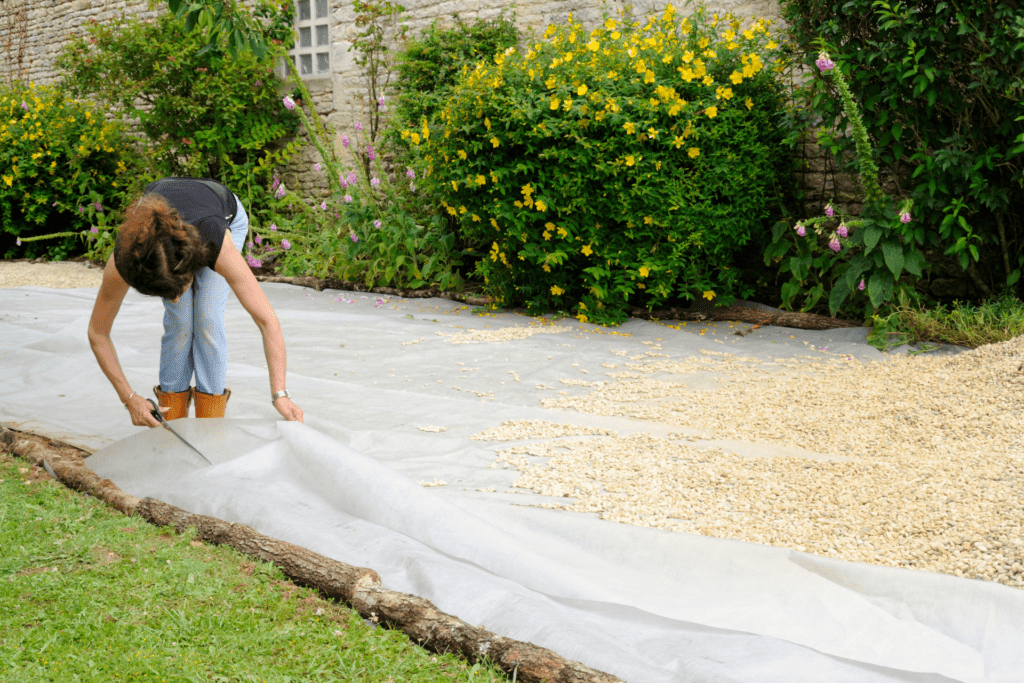
How To Choose The Right Gravel For Repairs And Resurfacing
When it comes to repairing or resurfacing your driveway, choosing the right type of gravel is crucial for durability, appearance, and overall performance. There are many options available, and the decision should be based on factors like climate, traffic, and your personal preferences. Here’s a comprehensive guide to help you make an informed choice.
Types of Gravel for Driveways
Gravel is a popular material for driveways because of its affordability, versatility, and ease of installation. However, not all gravel is created equal. Here are the most common types of gravel used for driveways.
Crushed Stone
Crushed stone is one of the most common choices for driveways. It’s made from larger rocks that have been mechanically broken down into smaller pieces. Crushed stone offers excellent drainage, making it ideal for areas prone to rain or snow. Additionally, its rough texture helps vehicles maintain traction, which is especially beneficial for steep driveways or areas with heavy traffic. Crushed stone can come in various sizes, but the most popular options for driveways include sizes #57 (about the size of a marble) and #21A (smaller particles that create a smoother surface).
Pea Gravel
Pea gravel consists of small, rounded stones, typically about the size of a pea. This type of gravel is known for its smooth texture and aesthetically pleasing appearance. It’s available in various colors, which can enhance the curb appeal of your home. While pea gravel is beautiful, it’s not always the best choice for high-traffic driveways, as the stones tend to shift under the weight of vehicles. However, it’s an excellent option for decorative purposes, walkways, or driveways with light traffic.
River Rock
River rock is another smooth, rounded gravel option, similar to pea gravel but larger in size. It’s often used for decorative driveways or to create visually appealing edging around garden beds or pathways. Like pea gravel, river rock isn’t ideal for high-traffic driveways due to its tendency to move and shift. However, it provides a luxurious, natural look that’s hard to beat. If you’re more concerned with aesthetics and have minimal traffic, river rock can be a stunning option.
Choosing Gravel Based on Climate and Traffic
Once you’ve explored the different types of gravel, it’s important to consider your local climate and the expected traffic volume when making your final decision. Here’s how these factors can influence your gravel choice.
Climate Considerations
If you live in an area that experiences harsh winters or frequent rainfall, choosing a gravel type with good drainage properties is essential. Crushed stone, for example, is ideal for regions with heavy precipitation because it allows water to drain quickly, reducing the risk of flooding or pooling. On the other hand, if you live in a dry, arid climate, you might not need to prioritize drainage as much, but you should consider gravel that can withstand intense heat and potential erosion.
For regions that experience freezing and thawing cycles, it’s crucial to use gravel that compacts well and can resist shifting as the ground moves. Crushed stone with angular edges is a great choice for cold climates since it locks into place more firmly than round stones like pea gravel or river rock.
Traffic Considerations
The amount of traffic your driveway will handle is another important factor in choosing the right gravel. For driveways that see a lot of use, especially by heavy vehicles like trucks or SUVs, you’ll need a durable gravel type that can withstand the pressure. Crushed stone is again a top pick for high-traffic areas because its angular shape provides stability and prevents shifting under weight.
For driveways with lighter traffic, such as those used by only one or two cars, you have more flexibility in your choice. Pea gravel or river rock can be used in these cases for a softer, more decorative look. However, you should be prepared to perform more regular maintenance, as these smaller, round stones can shift more easily over time.
Where to Buy Gravel
Once you know the type of gravel that’s best for your driveway, the next step is finding a reliable supplier. There are several places where you can purchase gravel.
Local Gravel Suppliers
Buying from a local gravel supplier is often the best option, as they are familiar with the specific needs of your area’s climate and conditions. Local suppliers can also offer guidance on how much gravel you’ll need and the best way to install it. Many local suppliers will even deliver the gravel directly to your driveway, saving you time and effort.
Landscaping Companies
Many landscaping companies also sell gravel as part of their service offerings. If you’re planning a larger project, such as a complete driveway overhaul or adding decorative features to your yard, working with a landscaping company can be beneficial. They can help you choose the right type of gravel and ensure that it’s installed correctly for long-term durability.
Online Sources
If you’re looking for convenience, online retailers offer a wide range of gravel types that can be shipped directly to your home. While this option may not always be as cost-effective as buying locally, it’s a good way to find specific types of gravel that may not be available in your area. Some popular online sources for purchasing gravel include home improvement stores and specialty landscaping websites.
Choosing the right gravel for repairs and resurfacing depends on factors like the type of traffic your driveway handles, the local climate, and your personal aesthetic preferences. Whether you go with crushed stone for durability, pea gravel for its smooth, decorative look, or river rock for a more natural appeal, each option has its strengths. Don’t forget to consider where you’ll purchase your gravel, as local suppliers, landscaping companies, and online retailers each offer different benefits. By considering all these factors, you’ll be able to choose the perfect gravel that fits your driveway’s needs for the long haul.
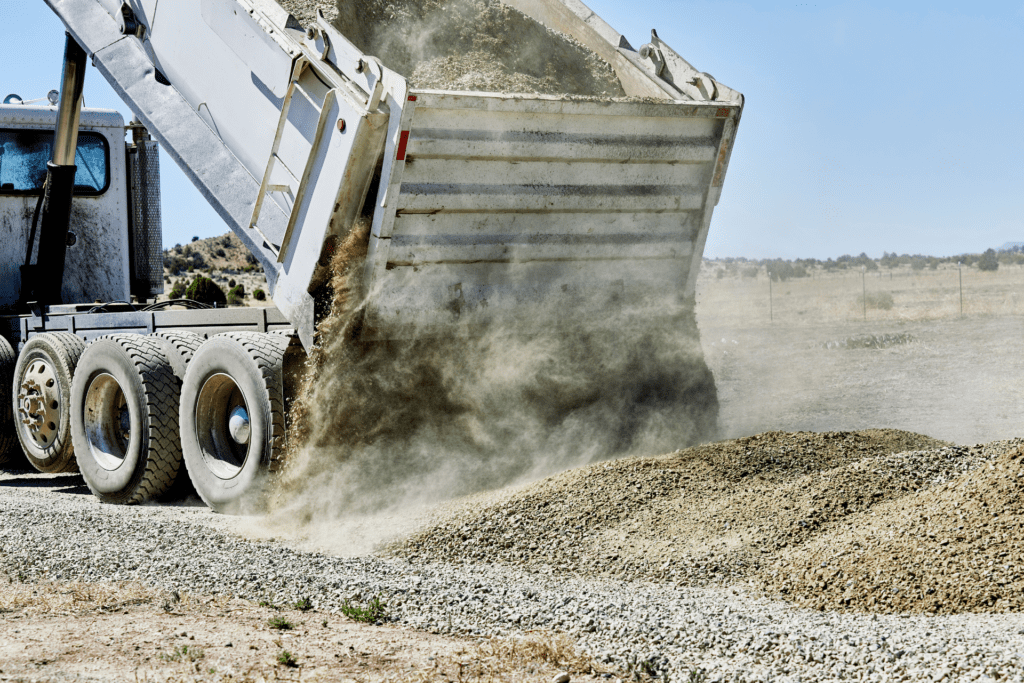
Preventative Measures For Long-Term Maintenance Of Gravel Driveways
Maintaining a gravel driveway requires regular attention to prevent common problems like uneven surfaces, potholes, or drainage issues. By incorporating preventative measures, you can extend the lifespan of your driveway and avoid costly repairs. Below, we’ll dive into a few practical tips that will keep your gravel driveway in top condition year-round.
Annual Checkups: Stay Ahead of Issues
One of the best ways to maintain your gravel driveway is by scheduling annual inspections. During these checkups, walk the length of your driveway and look for signs of wear and tear, such as areas where gravel has shifted, eroded sections, or developing potholes. Catching these problems early allows you to address them before they escalate into larger, more expensive repairs.
By performing these annual checkups, you can also ensure that the gravel remains evenly distributed, which helps maintain the driveway’s structural integrity and appearance. It’s much easier and cheaper to fix small patches of gravel or to add additional material to low spots rather than letting them worsen over time. Consider this simple preventative step as a cost-effective way to protect your investment.
Address Drainage Issues Early: Avoid Expensive Repairs Later
Drainage issues can be particularly damaging to gravel driveways. If water is allowed to pool on the surface or beneath the gravel, it can lead to erosion, potholes, and eventually the need for extensive repairs. Proper drainage is crucial to preventing these issues.
To avoid future problems, monitor how water flows during heavy rains. If you notice puddles forming or areas where water drains too slowly, take action immediately. Consider adding a French drain or regrading the surface to ensure water flows away from the driveway. Not only will this protect the structural integrity of your driveway, but it will also save you the hassle of dealing with erosion and the expense of major repairs down the road.
Winter Maintenance Tips: Protect Your Gravel Driveway During Cold Months
Winter weather can take a toll on gravel driveways, especially when snow and ice accumulate. Proper winter maintenance is essential to prevent damage during this season. Here are some tips to keep your driveway in top shape even through harsh winter conditions.
- Snow Removal Techniques: When clearing snow from a gravel driveway, avoid using traditional snowplows, which can scrape away the top layer of gravel. Instead, opt for a snowblower or a plow with a raised blade setting. This prevents damage to the gravel surface while effectively clearing snow.
- Use Salt Sparingly: Salt can melt ice, but it may also negatively impact the underlying soil and drainage around your driveway. If possible, use sand instead of salt to provide traction without harming the environment or the structure of your driveway.
- Regular Maintenance: After heavy snow or ice events, inspect the driveway for signs of damage or areas where gravel may have shifted. Quickly replenishing these spots with fresh gravel will prevent more extensive damage as the winter progresses.
By following these preventative measures, annual checkups, addressing drainage problems early, and practicing mindful winter maintenance you can significantly extend the life of your gravel driveway. Routine care not only keeps your driveway looking great but also minimizes the risk of expensive repairs in the future. A little proactive attention can go a long way in maintaining a safe, durable, and attractive driveway year-round.
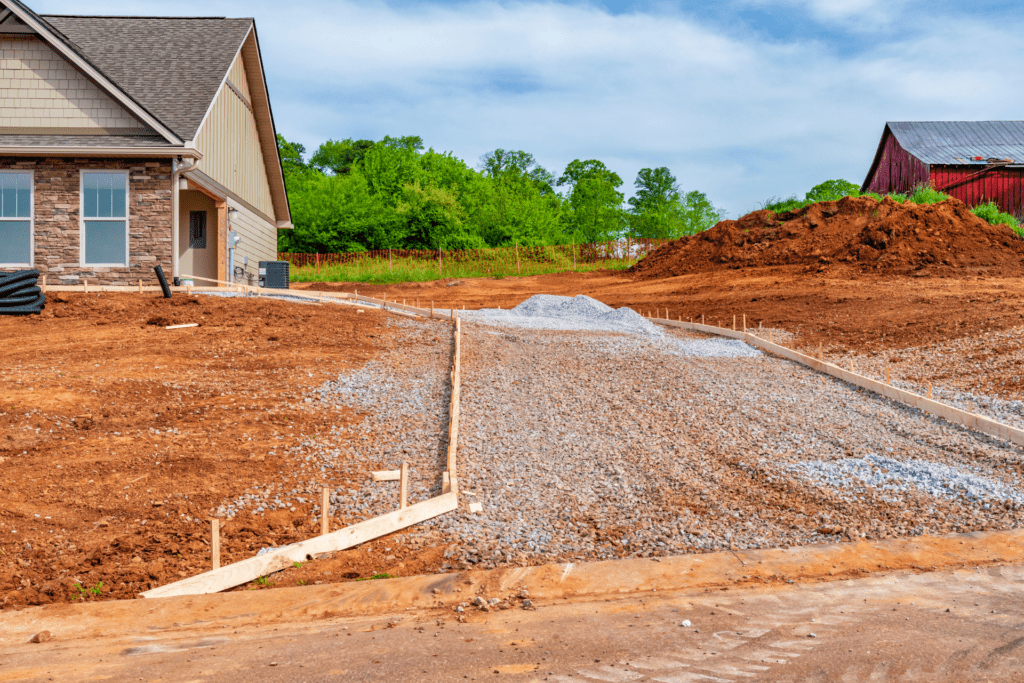
FAQs: About Gravel Driveway Maintenance
How often should I perform maintenance on my gravel driveway?
Ideally, you should perform routine maintenance on your gravel driveway at least once or twice a year. However, more frequent maintenance may be needed depending on the driveway’s usage, local weather conditions, and any visible issues like potholes, ruts, or erosion.
What is the best way to fill potholes in a gravel driveway?
To fill potholes, first clear out any debris and loose stones from the hole. Then, fill the pothole with fresh gravel, making sure to use a combination of larger stones as a base and smaller gravel on top. Compact the material firmly using a tamper or roller to ensure it’s tightly packed and level with the surrounding area.
How can I prevent erosion on my gravel driveway?
Erosion can be minimized by ensuring proper drainage. Grade your driveway so that water runs off to the sides instead of pooling on the surface. Installing drainage systems like French drains or creating water diversion ditches can also help protect your driveway from washouts caused by heavy rains.
What’s the best type of gravel to use for driveway maintenance?
Crushed stone, pea gravel, or a combination of different-sized gravel works best for driveway maintenance. Crushed stone provides a sturdy base, while smaller gravel on top helps maintain a smooth, finished surface. Consider local weather and the amount of traffic when choosing the right type of gravel.
Can I use a snow blower or plow on my gravel driveway?
Yes, but you should take extra care when using a snow blower or plow on a gravel driveway to avoid damaging the surface or scattering gravel. Set the plow blade slightly above the surface, and avoid digging too deep to prevent disturbing the gravel layer. Some snow blowers come with adjustable skid shoes to help with this.
How do I control weeds on my gravel driveway?
Prevent weeds by laying down landscape fabric beneath the gravel, or by applying a pre-emergent weed killer. If weeds are already present, you can manually remove them or apply a targeted herbicide. Regular maintenance, such as raking and compacting the gravel, can also prevent weed growth.
What should I do if my gravel driveway has ruts and channels?
Ruts and channels form due to repeated vehicle traffic. To fix them, rake the gravel from the sides of the driveway back into the low areas, then use a tamper or roller to compact the surface evenly. For deeper ruts, you may need to add new gravel and compact it properly to restore a smooth surface.
Is gravel driveway maintenance something I can do myself, or should I hire a professional?
Many gravel driveway maintenance tasks, like filling potholes, raking, and compacting, can be done by homeowners with basic tools. However, larger tasks like grading for drainage, major resurfacing, or fixing serious erosion issues may require professional equipment and expertise.
How can I prevent my gravel driveway from becoming muddy?
Muddy driveways are often caused by poor drainage or insufficient gravel coverage. Make sure the driveway is properly graded to allow water to run off. Adding more gravel and compacting it can help reduce mud buildup. You can also use a mix of crushed stone and gravel to create a firmer surface.
What is the best time of year to perform gravel driveway maintenance?
The best time to perform gravel driveway maintenance is during the spring and fall when the weather is moderate. Spring maintenance helps repair any damage from winter weather, while fall maintenance prepares the driveway for the cold and wet months ahead. Avoid performing maintenance during heavy rain or extreme weather, as this can hinder your efforts.
Conclusion
Maintaining a gravel driveway is essential to preserving both its functionality and appearance, and consistent care can save you from costly repairs in the future. Throughout this article, we’ve highlighted the importance of regular upkeep, such as addressing potholes promptly, grading the surface to ensure even distribution of gravel, and keeping an eye on drainage to avoid water damage. By following these simple yet effective tips, you can extend the life of your gravel driveway and keep it looking its best year-round. Taking action now with routine maintenance will not only enhance the curb appeal of your home but also provide a safer and smoother driving experience for everyone who uses it. Whether you’re already maintaining your driveway or just getting started, it’s important to remember that consistency is key. Be sure to bookmark this guide for future reference and revisit it whenever you need a quick refresher. You can also share it with friends, neighbors, or family members who might find these gravel driveway care tips useful in keeping their own driveways in great shape. Taking a proactive approach will make all the difference in preserving your driveway for years to come.
About the Author:
Mike Veail is a recognized digital marketing expert with over 6 years of experience in helping tradespeople and small businesses thrive online. A former quantity surveyor, Mike combines deep industry knowledge with hands-on expertise in SEO and Google Ads. His marketing strategies are tailored to the specific needs of the trades sector, helping businesses increase visibility and generate more leads through proven, ethical methods.
Mike has successfully partnered with numerous companies, establishing a track record of delivering measurable results. His work has been featured across various platforms that showcase his expertise in lead generation and online marketing for the trades sector.
Learn more about Mike's experience and services at https://theleadguy.online or follow him on social media:


